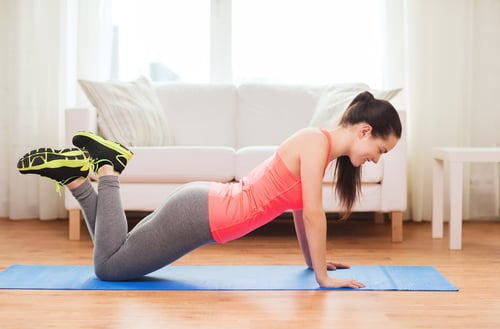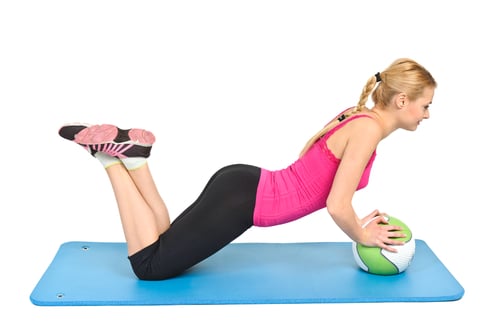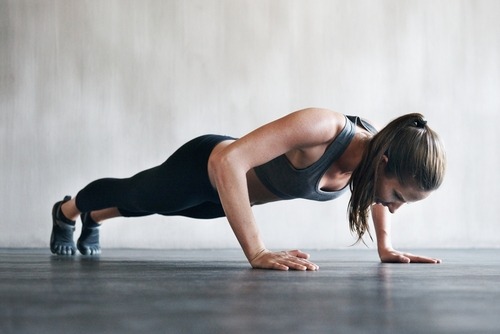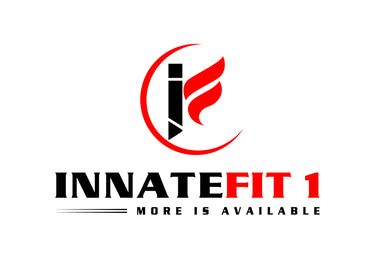Visit Innatefit1.com for exercise wear and equipment!!!
Push Like a Queen: The Ultimate Push-Up Progression for Women Who Are Just Getting Started
Discover a friendly, step-by-step progression for push-ups tailored to women. From wall and kneeling variations to standard and advanced moves, this beginner push-up workout fits perfectly into your women’s home strength training routine.
WOMEN'S HEALTHSELF-HELPWORKOUTSFITNESS TIPSWEIGHT LOSS WOMEN'S FITNESS TIPSSTRENGTH TRAINING
Joseph Battle
7/9/20256 min read
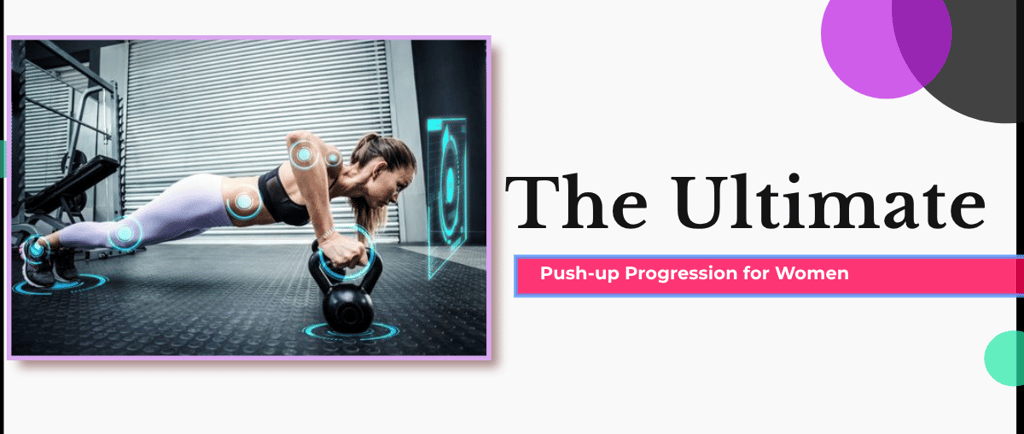

Introduction
Welcome to the empowering world of push-ups! If you’re searching for a beginner push-up workout that transforms your strength, boosts your confidence, and fits right into your women’s home strength training routine, you’ve come to the right place.
Push-ups are legendary for sculpting arms, shoulders, and core muscles. Yet many women hesitate, thinking push-ups are too advanced or simply not for them. However, with a structured push-up progression for women, anyone can master this foundational move.
Moreover, a push-up routine at home saves time and gym fees, allowing you to achieve results on your schedule.
In this post, you’ll discover how to do push-ups for women at every level. We’ll walk you through beginner pushups women love, share the best push-ups for women at each stage, and highlight push-up modifications women can use when they need a helping hand.
Therefore, whether you’re a total newbie or returning after a fitness break, you’ll find step-by-step guidance and plenty of encouragement. So grab your mat, set your mindset, and let’s get started!
Embrace the Power: Why Push-Ups Are a Game-Changer
Push-ups are more than a classic calisthenic exercise—they’re an all-in-one powerhouse. Not only do they engage your chest, triceps, and shoulders, but they also recruit your core, lower back, and even your glutes.
Consequently, this bodyweight move delivers maximum results with zero equipment. For busy women building a push-up routine at home, that convenience is priceless. Moreover, studies show that regular push-up practice can improve overall upper-body strength and endurance, making everyday tasks—such as lifting groceries or playing with children—much easier.
Furthermore, push-ups cultivate functional fitness. Unlike isolation exercises on machines, they train your body to move as a unit. Therefore, you build real-world strength that translates to better posture, more confident presence, and reduced risk of injury.
Plus, each push-up progression for women fosters progressive overload. In other words, as you level up from wall push-ups to full-range movements, you challenge your muscles to adapt, grow, and get stronger.
Ultimately, the best push-ups for women are those that cater to your current ability and gradually increase your strength. Read on to discover how to pick the perfect starting point and move forward with confidence.
Step 1 – Mastering the Foundation with Wall Push-Ups
When tackling push-ups for the first time, it’s wise to begin on your feet instead of the floor. Wall push-ups allow you to practice alignment, engage your shoulder blades, and build pressing strength without overwhelming your muscles. Here’s how to do wall push-ups:
Stand facing a wall, about an arm’s length away.
Place your hands flat on the wall at chest height and shoulder-width apart.
Engage your core, draw your shoulder blades down, and keep a straight line from head to heels.
Bend your elbows and lean your chest toward the wall.
Push back to the starting position, fully extending your arms.
Moreover, wall push-ups provide an ideal modification for women who need a gentle introduction to push-ups. In addition, they let you control the difficulty simply by stepping closer or farther from the wall.
As you grow stronger, move your feet back for a steeper angle and greater resistance. However, don’t rush—master perfect form first. Aim for three sets of 12–15 wall push-ups, resting 30–45 seconds between sets. Consequently, you’ll build confidence and lay a solid foundation for future progress.
Step 2 – Kneeling Push-Ups: Building Strength with Beginner Pushups for Women
Once wall push-ups feel manageable, it’s time to lower the bar—literally. Kneeling push-ups, also known as modified push-ups, bring you closer to the floor while offering support from your knees. This variation remains highly effective for the chest, arms, and core but demands more strength and stability.
Follow these steps for a straight-knee push-up:
Begin in a high plank position with knees on the ground.
Place your hands slightly wider than shoulder-width.
Keep your body in a straight line from head to knees—avoid sagging hips.
Bend your elbows to lower your chest toward the floor.
Push back up until your arms are fully extended.
Kneeling push-ups are one of the best push-ups for women who appreciate a balance of challenge and support. Additionally, you can introduce push-up modifications that women can use to manage discomfort, such as placing a folded mat under their knees or rotating their elbows at a 45-degree angle.
Aim for three sets of 8–12 reps, resting one minute between sets. In time, your strength will grow, and you’ll be ready to progress to more demanding variations.
Step 3 – Elevated (Incline) Push-Ups: Level Up Your Routine
Transitioning from your knees to an elevated surface constitutes a key push-up progression for women. Incline push-ups allow you to tackle a moderate challenge before progressing to the classic floor variation. Plus, they replicate the actual shape of a push-up more closely than any other beginner push-up workout.
To perform incline push-ups:
Find a sturdy bench, chair, or countertop.
Place your hands shoulder-width apart on the edge of your surface.
Walk your feet back so your body forms a straight line from head to heels.
Engage your core, lower your chest to the bench, and then press up.
Fully extend your elbows at the top.
Because incline push-ups offer gradual intensity, they’re often considered the best push-ups for women looking to step up their routine. Moreover, as you lower the height of your surface (bench → coffee table → couch), resistance naturally increases.
Therefore, you’re following an intelligent push-up progression that ensures safe, sustainable strength gains. For a beginner push-up workout, perform three sets of 10–15 reps, resting 45–60 seconds between sets. Before long, incline push-ups will feel like child’s play—and you’ll be itching for the next level.
Step 4 – Standard Push-Ups: Hitting the Traditional Form
At this point, you’ve built a robust foundation through wall, kneeling, and incline push-ups. Now you’re ready to conquer the classic push-up.
Mastering this full-range move signals a significant milestone in any woman’s home strength training journey. Not only will you feel proud, but you’ll also enjoy improved upper-body power and greater muscular endurance.
Follow these cues for a perfect standard push-up:
Start in a high plank with hands beneath shoulders and fingers splayed.
Keep your neck in a neutral position—look slightly ahead, not down at the floor.
Brace your core, draw your shoulders down and back, and squeeze your glutes.
Bend your elbows at a 45-degree angle, lowering your chest three to four inches from the ground.
Push through palms, fully extend your arms, and maintain a straight line throughout.
When you first attempt standard push-ups, don’t be discouraged if you can only do a few reps. Instead, focus on quality over quantity. After each rep, reset, check your form, and then continue. A starting goal of 5–8 solid repetitions per set is perfect.
As you progress, gradually increase to 3 sets of 10–15 reps. Ultimately, this classic variation will become the backbone of your push-up progression for women.
Step 5 – Advanced Variations: Push-Up Modifications Women Love
Once you’ve mastered the standard push-up, you can spice up your routine with advanced modifications. These best push-ups for women add variety and target muscles in new ways, keeping your workouts exciting and compelling.
Among our favorites are:
• Diamond Push-Ups: Position your hands under your chest, forming a diamond shape with thumbs and index fingers. This variation focuses on the triceps and inner chest.
• Decline Push-Ups: Elevate your feet on a bench or box. Now your upper chest and shoulders take on a heavier load.
• Plyometric Push-Ups: Push explosively off the floor, “clapping” your hands between reps. This dynamic move drives power and speed, ideal for athletic women.
In addition, you can experiment with staggered hands, archer push-ups, or even single-arm push-ups. Each modification builds on your existing strengths, helping you break through plateaus and continue to crush your goals.
However, always honor proper form and listen to your body. If something feels off, revert to a simpler variation before attempting that fancy move again. With time, each push-up becomes an opportunity to grow stronger, leaner, and more resilient.
Putting It All Together: Crafting Your Beginner Push-Up Workout
Now that you understand the stages of a push-up progression for women, it’s time to assemble your very own push-up routine at home. A balanced beginner push-up workout might look like this:
Warm-Up (5 minutes): • Arm circles (30 seconds forward/30 seconds backward)
• Dynamic chest stretches (30 seconds) • Scapular push-ups (2 sets of 10)
Main Set (15–20 minutes): • Wall push-ups: 3×12 • Kneeling push-ups: 3×10
• Incline push-ups: 3×8 • Standard push-ups: 3×5 (or AMRAP keeping good form) Cool-Down (5 minutes): • Child’s pose stretch (1 minute)
• Chest opener stretch against a wall (1 minute each side) • Shoulder cross-body stretch (30 seconds each arm)
As you advance, swap out wall or kneeling push-ups for more incline or standard reps. Additionally, incorporate advanced variations, such as diamond push-ups or plyometric sets. Keep a workout log to track reps, sets, and feelings post-workout. This simple habit enables you to track your progress over weeks and months. Best of all, the entire routine requires minimal equipment—just you, a sturdy surface, and your determination.
Tips, Tricks, and Next Steps: Staying Motivated on Your Push-Up Journey
Finally, let’s talk motivation. Highs and lows mark every woman’s home strength training journey. Yet, by celebrating small victories—like your first five standard push-ups—you build confidence and momentum. Therefore, consider celebrating milestones: treat yourself to a new workout top, share your progress with friends, or post a time-lapse video of your push-up milestone online.
Moreover, remember that rest is as vital as work. Schedule at least one full rest day per week, allowing muscles to recover and grow stronger. Additionally, focus on overall health by eating protein-rich meals, prioritizing sleep, and staying hydrated.
If you hit a plateau, revisit your form, tweak your routine, or enlist a workout buddy for accountability. In time, the push-up progression for women you’re following will become second nature—and your body will reward you with strength, toning, and unshakable confidence.
